RIDGID 836 Handleiding
Bekijk gratis de handleiding van RIDGID 836 (4 pagina’s), behorend tot de categorie Niet gecategoriseerd. Deze gids werd als nuttig beoordeeld door 36 mensen en kreeg gemiddeld 4.4 sterren uit 18.5 reviews. Heb je een vraag over RIDGID 836 of wil je andere gebruikers van dit product iets vragen? Stel een vraag
Pagina 1/4

Pipe Wrench Use Guide
Read the warnings and instruc-
tions for all equipment and material
being used before operating this
tool to reduce the risk of serious
personal injury.
• Use personal protective equipment. Always wear eye
protection. Protective equipment such as non-skid safety
shoes, hard hat, etc. used for appropriate conditions will
reduce the risk of personal injury.
• Do not use handle extensions (“cheaters”) or exces-
sive force. These may damage the tool or slip and cause
serious injury.
• Do not use with a threading machine to install or
remove (make or break) fittings. This can cause striking
or crushing injuries.
• Do not use come-a-longs, chain hoists, handle exten-
sions, backhoes, threading machines, drill rigs or
other mechanical, hydraulic or powered devices to
activate pipe wrenches to install or remove (make or
break) fittings. Pipe wrenches are hand tools designed to
be used by hand. Use of these types of devices with pipe
wrenches can result in wrench and equipment damage
and failure from overload and increases the risk of striking,
crushing or other serious injury.
• Do not use a wrench with a bent or twisted handle.
A bent handle indicates the wrench has been overloaded
and is damaged. A bent handle should never be straight-
ened. A wrench with a bent or twisted handle should be
taken out of service.
• Do not modify or alter a pipe wrench. Modifying a pipe
wrench may result in wrench failure and serious injury.
• Do not overreach. Keep proper footing and balance
at all times. This enables better control of the tool in
unexpected situations.
• Do not hit a wrench with a hammer to break loose
a fitting. Impact loading may damage the wrench, chip
wrench teeth or cause serious injury.
• Do not misuse pipe wrenches. Other uses increase the
risk of serious injury.
Do not use as a hammer.
Do not apply a side load to the handle.
Do not use as a lever, lifting device or bender.
Do not use the wrench on hard, square, hexagonal or
other non-round material.
Pipe Wrench Use Guide
Pipe wrenches are designed to turn pipe. Improper use
may result in damage or injury.
• Do not use near flame or high heat. Teeth on the hook
or heel jaw could become soft. This may result in chipping
or flattening of the teeth. This reduces its strength which
may result in failure.
• Properly support the work piece. Failure to properly
support the workpiece can cause falling or shifting pipe
and equipment and increases the risk of injury.
• When using pipe wrenches with other Ridge Tool
products, follow the instructions supplied with that
product.
• Stay alert, watch what you are doing and use common
sense when using tools. Do not use when you are tired
or under the influence of drugs, alcohol or medication.
A moment of inattention while operating tools may result
in serious personal injury.
• Do not let familiarity gained from frequent use of tools
allow you to become complacent and ignore tool safety
principles. A careless action can cause severe injury in a
fraction of a second.
• Pipe wrenches are general use tools that can be used in a
variety of situations. Ridge Tool cannot provide guidance on
all possible use situations. Users must evaluate the specific
work scenario and apply training, good work practices and
methods to reduce risk.
NOTICE Selection of appropriate materials and installation,
joining and forming methods is the responsibility of the system
designer and/or installer. Selection of improper materials and
methods could cause system failure.
Stainless steel and other corrosion resistant materials can
be contaminated during installation, joining and forming. This
contamination could cause corrosion and premature failure.
Careful evaluation of materials and methods for the specific
service conditions, including chemical and temperature,
should be completed before any installation is attempted.
If you have any questions concerning this RIDGID® product:
– Contact your local RIDGID distributor.
– Visit RIDGID.com to find your local RIDGID contact point.
– Contact Ridge Tool Technical Service Department at
rtctechservices@emerson.com or in the U.S. and Canada
call (800) 519-3456.
Printed 04/18
EC42887
999-888-101.10
REV. A
©2018 RIDGID, Inc.
The Emerson logo and RIDGID logo are registered trademarks of Emerson Electric Co. or RIDGID, Inc. in the U.S. and other countries.
All other trademarks belong to their respective holders.

Description
RIDGID® Pipe Wrenches are hand tools designed to turn
pipe and tighten and loosen threaded pipe connections
with round threaded fittings. Pipe wrenches are RIDGID
available in a variety of configurations, including ductile iron
or aluminum handle versions. Consult the RIDGID catalog
for more information on available units.
Heavy-Duty Straight Pipe
Wrenches: suitable for all
forms of pipe work
RapidGrip® Pipe
Wrenches
End Pipe Wrenches:
easy grip for close to wall
and parallel work
Offset Pipe Wrenches:
easy entry to tight spots
and awkward angles
Raprench® Wrenches:
ideal for occasional use as
a hammer
Compound Leverage
Wrenches: multiplies
leverage, used for seized
joints
See the product markings for specifications or consult the
RIDGID catalog.
Figure 2 – Wrench Parts
Inspection/Maintenance
Daily before use, clean the wrench to aid inspection and
improve control. Handles and gripping surfaces should be
clean, dry and free of oil and grease. Inspect the wrench for:
2
Pipe Wrench Use Guide
• Proper assembly and completeness
• Wear. Clean the jaws with a wire brush. Teeth should be
clean and sharp. Replace jaws if teeth are worn to reduce
the risk of slippage
• Damage such as cracks, cuts, nicks, deformation
• Bent or twisted handles. Do not straighten handles.
Wrenches with bent handles have been overloaded and
should be removed from service.
• Modification of any kind, including grinding or welding.
Modification can weaken a wrench.
• Discoloration or other indications of heat damage
• Proper operation. Hook jaw should move smoothly when
the nut is turned. Springs in housing should allow hook jaw
to pivot slightly. This allows proper ratcheting action of the
wrench.
• Other issues that could affect safe use.
If any problems are found, do not use until corrected. Remove
worn, bent or otherwise damaged wrenches from service and
dispose of. Only use genuine RIDGID service parts.
Inspect chains for any separation of links or other damage.
Link separation indicates the chain has been overloaded
and should be replaced.
Lubricate all moving parts/joints as needed with light lubri-
cating oil. Wipe up excess oil. Keep non painted parts well
lubricated with oil and store in a dry place.
Set-Up
Inspect the material to be worked with. Pipe wrenches are
designed for use on round pipe and threaded fittings, or
soft round stock. Do not use on hard (325 BHN maximum),
square, hexagonal or other non-round material. The jaw
teeth should penetrate the stock to properly grip. Wrench
may slip on hardened material or the teeth may chip when
used on hex or square stock.
Pipe wrenches can apply high forces to pipe that can crush
or oval the pipe, especially thinner wall pipe. Pipe wrench
jaw teeth grip by digging into the material of the pipe. This
will mar the surface finish of the pipe and could create sharp
edges and cut hazards.
Choose a proper size and type of pipe wrench for the job. Do
not use on pipe larger than rated for. (See Chart 1)
Hole
Figure 1 – RIDGID Pipe Wrenches

3
Pipe Wrench Use Guide
Pipe Wrench
Size
Suggested
Pipe Size
Range
Maximum
Pipe Size
6" 1⁄8" - 1⁄2"3⁄4"
8" 1⁄4" - 3⁄4" 1"
10" 1⁄4" - 1" 11
⁄2"
12" 1⁄2
" - 11
⁄4" 2"
14" 1⁄
2" - 1 1⁄
2" 2"
18" 2 1" - 2" 1⁄
2"
24" 11⁄
2" - 2 1⁄
2" 3"
36" 2" - 3 1
⁄2" 5"
48" 6"3" - 5"
60" 8"3" - 6"
Make sure the work piece is stable and well supported to
prevent tipping and falling during use.
When using a pipe wrench of any size, a gap must be main-
tained between the shank of the hook jaw and the work
piece. (Figure 3) This permits the two gripping points (heel
jaw teeth and hook jaw teeth) to produce the gripping action
of the wrench. Allowing the shank of the hook jaw to contact
the work piece greatly reduces the gripping action and can
cause slippage. It may also result in the failure of the hook
jaw. (Figure 4)
Adjust the hook position by rotating the nut as needed.
Wrench should be square to the pipe. Do not use with the
wrench at an angle to the pipe.
Figure 4 – Wrench Too Small For Work Piece, Hook Shank
Touching Work Piece.
RapidGrip® Wrench
When using a RapidGrip wrench, be sure to center the work
piece in the “v” of the hook. If the work piece is not in contact
with both sides of the “v”, it can reduce wrench gripping action
and may result in failure of the hook.
Figure 5 – Using a RapidGrip Wrench
Compound Leverage Wrenches
Mount trunnion on pipe close to threads, with shank of trun-
nion pointing towards the threads as shown in Figure 6A.
Run chain over pipe, hook into ears of trunnion and securely
tighten with chain screw handle. With wrench head properly
adjusted for work piece size (maintain gap between hook jaw
shank and work piece), place the end of the wrench handle
over the shank of the trunnion. Place the wrench head on the
work piece. Secure the wrench handle to the trunnion shank
with the cotter pin. (Figure 6B)
Figure 3 – Maintain Gap Between Hook Shank and Work Piece
Chart 1 Suggested Pipe Size Range -
Hook Shank
Product specificaties
| Merk: | RIDGID |
| Categorie: | Niet gecategoriseerd |
| Model: | 836 |
Heb je hulp nodig?
Als je hulp nodig hebt met RIDGID 836 stel dan hieronder een vraag en andere gebruikers zullen je antwoorden
Handleiding Niet gecategoriseerd RIDGID
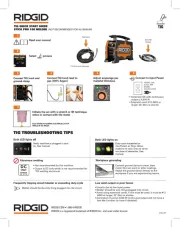
17 Juni 2025

16 Juni 2025

18 Augustus 2024

5 Maart 2024

5 Maart 2024

5 Maart 2024

27 Februari 2024

26 Februari 2024

26 Februari 2024

26 Februari 2024
Handleiding Niet gecategoriseerd
- Elsner
- Belkin
- Arista
- Bluemarina
- Guzzanti
- Steelplay
- Hom-io
- Uniross
- Kalley
- Audison
- Satisfyer
- SureFlap
- Dolmar
- High One
- My Wall
Nieuwste handleidingen voor Niet gecategoriseerd
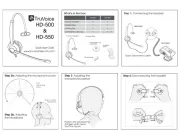
1 Augustus 2025
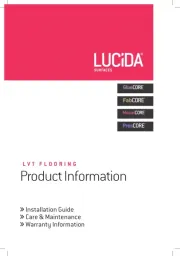
1 Augustus 2025
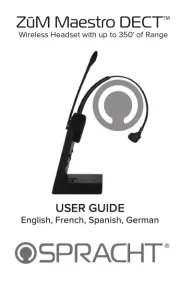
1 Augustus 2025
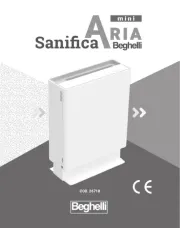
1 Augustus 2025
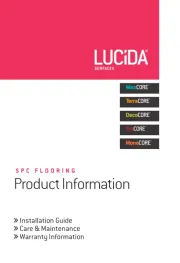
1 Augustus 2025
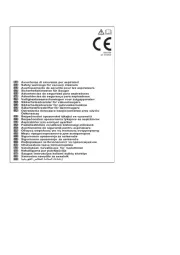
1 Augustus 2025
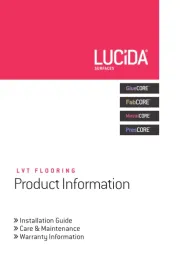
1 Augustus 2025
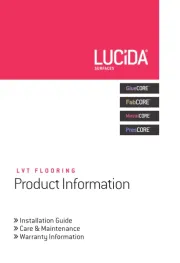
1 Augustus 2025
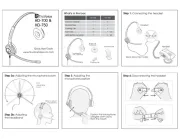
31 Juli 2025
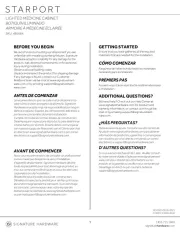
31 Juli 2025